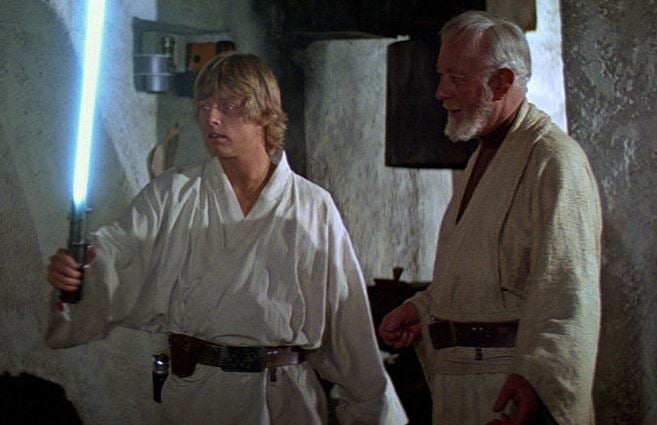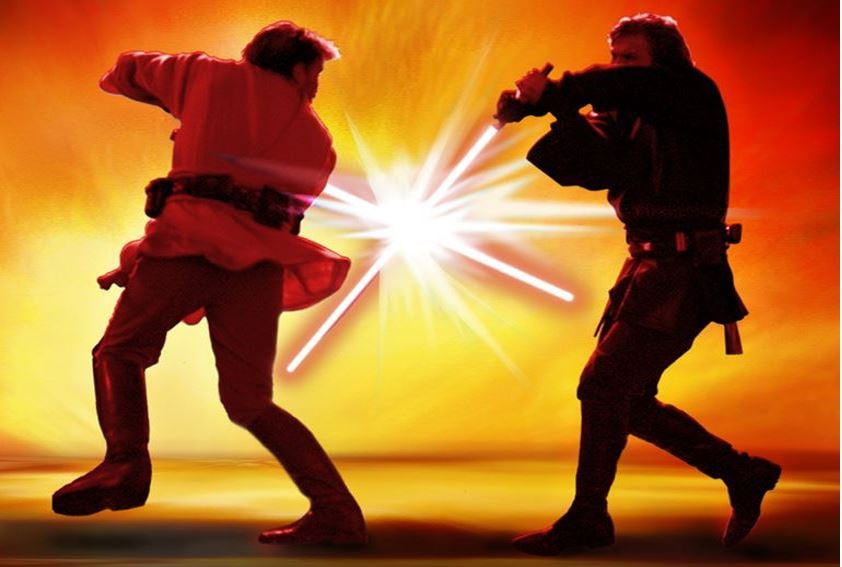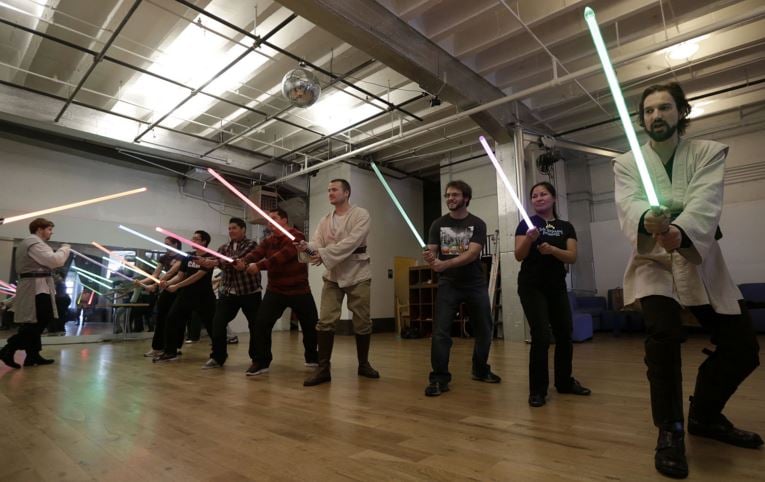If you want a spectacular lightsaber like the one used in Star Wars, you have to use searing hot plasma, not a laser beam, which would just beep travelling, says Dr. Gianluca Sarri, a lecturer at the School of Mathematics and Physics, Queen’s University Belfast. With Star Wars: The Force Awakens coming to British cinemas next week, interest in lightsabers is set to skyrocket.
The lightsaber is the weapon of a Jedi, a member of the mystical knightly order in the Star Wars movies, trained to guard peace and justice across the Universe. It is an elegant weapon of a more civilized age that can be used to cut through enemies or blast doors alike. According to www.starwars.com, a Jedi can use the Force to predict and deflect incoming blaster bolts, and reflect them.
As any Star Wars fan will tell you, lightsabers are probably the coolest and deadliest weapons ever to make an appearance on the giant screen. Lightsaber combats are so elegant they are mesmerizing.
 Even if you manage to make your own lightsaber using searing hot plasma, where are you going to find a Jedi to teach you how to use it? (Image: www.starwars.com)
Even if you manage to make your own lightsaber using searing hot plasma, where are you going to find a Jedi to teach you how to use it? (Image: www.starwars.com)
Why haven’t we created a proper lightsaber?
A lightsaber is a very light but incredibly powerful tool that uses blades of energy. So, why haven’t any of the hundreds of thousands of clever physicists worldwide been able to produce one of these amazing objects? There are bound to be many Star Wars fans among them.
Most of us would think that building one would be simply a question of using a laser, which can be seen as a very bright and directional burst of light. While laser technology has come a long way over the last couple of decades, we are still light-years from having a usable laser-based lightsaber.
Firstly, you need a sword that is sword-sized, which is about three feet (1 metre). So, the laser beam needs to come to a stop at three feet. This is no easy task – light has the natural tendency to keep travelling if nothing blocks it.
You could fit a tiny mirror at the end of the blade. However, you would need to build a supporting structure for the mirror. Any self-respecting fighter would be too embarrassed to come to the battlefield with a beautiful sword strapped to a supporting structure for the mirror. Apart from looking rather silly, the cumbersome weapon would not be able to do any damage.
Secondly, you need to create a blade that can slice through metals and other objects. There are lasers today that can do that, but they need enormous amounts of energy. We do not yet have the technology to fit so much energy in the small hilt of a lightsaber.
You would also need to make an incredible cooling mechanisms to stop the hilt from burning your hand.
Then there are the effects of lightsaber battles, which with a laser beam would not be possible. If two laser-based weapons clashed against each other, the beam from one would simply pass through the beam of the other with no effect.
 Laser beam-based lightsabers would just go through each other when clashing, with no spectacular flashing light effect. (Image: starwarsforce.files.wordpress.com)
Laser beam-based lightsabers would just go through each other when clashing, with no spectacular flashing light effect. (Image: starwarsforce.files.wordpress.com)
Laser beams have another feature, which would not make for spectacular-looking weapons. Their light focuses in one direction so sharply that nobody can see it unless they look directly down its axis. That is why nightclubs use fog or smoke when flashing laser lights – so that they can be seen.
Making a lightsaber using hot plasma
Even though we do not have the technology to make a Star Wars type lightsaber using laser beams, we could create a hot plasma-based one.
Plasma is an ionized gas consisting of free electrons and positive ions in proportions resulting in more or less no overall electric charge, usually at low pressure (as in fluorescent lamps and in the upper atmosphere) or at extremely high temperatures (millions of degrees centigrade), as in nuclear fusion reactors or stars.
The electrons and nuclei can be generated by applying very powerful electrical discharges such as lightning to a gas.
Ultra-hot plasma also emits different colours, depending on which gas they are made of. A neon light, for example, is just a tube filled with neon gas in a plasma state. Chlorine plasma could emit the green light seen coming from the Jedi knights’ lightsabers. The Sith villains’ red lightsabers could be created using a helium-based plasma, which mostly gives off a red-to-violet light.
 Alain Block, a Golden Gates Knights instructor, teaching a class in 2013. There are scores of people out there who would pay dearly to have a real, metal-slicing lightsaber. (Image: www.syracuse.com)
Alain Block, a Golden Gates Knights instructor, teaching a class in 2013. There are scores of people out there who would pay dearly to have a real, metal-slicing lightsaber. (Image: www.syracuse.com)
Dr. Sarri wrote in The Conversation:
“How might a plasma lightsaber work in practice? A small but powerful power supply hidden in the hilt could be attached to a long and tiny filament that carries the electrical discharge and puffs some gas around it.”
“When you turn it on, the filament would become incandescent and the gas around it would turn into plasma, emitting its colour in every direction. The searing heat of the plasma would instantaneously melt any object it touches, cutting cleanly like a blade.”
You still have the problem of where to store the gas to feed the filament. Also, one sword would need to be sturdy enough to withstand the blow from another lightsaber. However, as Dr. Sarri wrote “But it’s a good start. After all, the Galactic Empire wasn’t built in a day.”
Video – Top 10 Star Wars lightsaber battles
Discover more from Market Business News
Subscribe to get the latest posts sent to your email.

